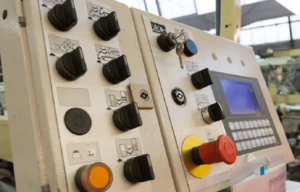Planning To Follow Vertical Farming In India? Here Is Our Ultimate Guide ForBeginners

Like hydroponic farming, vertical farming in India is also gaining popularity, and it’s a modern farming type practiced in the restricted locations.
So what actually vertical farming is? Vertical farming is an easier way to produce veggies and herbs on vertically inclined surfaces, primarily practiced in the restricted entries and shipping containers.
The concept of vertical farming is based on controlled environment farming (CEA) and indoor farming that also curbs agricultural waste. Climate regulators, artificial lights, and fertilization systems are used in vertical farming.
In our opinion, vertical farming is like a branch of greenhouse farming where natural lights are increased artificially through commercial lighting systems and metal reflectors.
The only objective of doing vertical farming is enhancing crop production within the limited space. So, whether you’re interested or planning to follow vertical farming, read this guide until the end.
What Is The Working Process Of Vertical Farming? (Quite Important)
Vertical farming is all about producing the best possible crops per square meter. For achieving this goal, the crops are produced in the stacked layers. Next, when it comes to lighting, the combination of both natural and artificial lighting is considered. For enhancing the efficiency of the lighting systems, metal reflectors and revolving chairs are preferred.
Surprising, vertical farming is also somewhat related to aeroponic and hydroponic farming types. Yes, because the materials used in these farming types are also preferred in vertical farming. The most common non-soil mediums used in vertical farming premium moss and dried coconut husks.
The major difference between vertical farming and other farming types are energy costs and sustainability features. As per various reports, the water consumption in vertical farming is just 5% of other farming types.
Quick AdvantagesAndDisadvantages Of Vertical Farming
Advantages
- Environmental factors cannot affect your produces.
- The crops are never exposed to chemicals
- Less water consumption
- You can grow crops 365 days
- 100% organic crops can be easily grown
Disadvantages
- The higher labor and maintenance costs can burn your pockets.
- You always require power backup as vertical farming is more dependent on human-made systems.
- Pollination is the major challenge in vertical farming.
- Adopting and maintaining vertical farming systems is quite pricey and challenging.
Is Vertical Farming Advantageous For You?
Vertical farming can only be advantageous if your pockets aren’t tight. This type of farming isn’t successful in rural areas because of the lack of resources. If you’re doing vertical farming, you have to deal with the day-to-day challenges and always keep the backup of all the resources under your belt.
Thus, before you plan or invest your money in vertical farming, think twice and seek assistance from the experts. You have to be very cautious while following modern farming styles.
The Takeaway
So this was all about vertical farming in India you should know about, and now you probably have the basic understanding. In the upcoming years, vertical farming will be more advanced, and you should wait until that period.
So was our guide helpful for you? Please let us know in the comment section!





